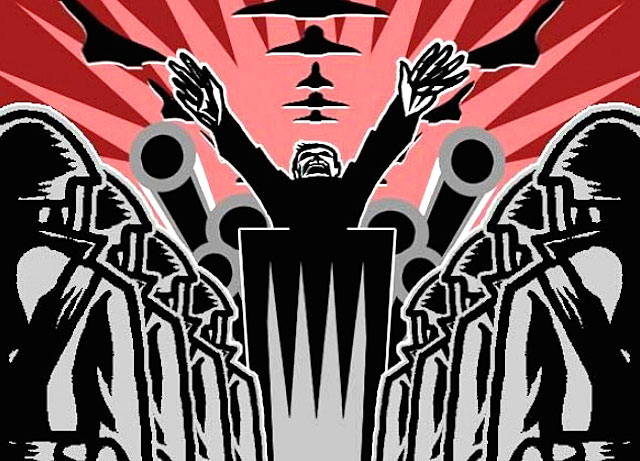CHAPTER 13 The Rise of Totalitarianism
Objective:
*Analyze how Western society changed after WWI
*Compare the Post-War economic situations in Britain, France and the USA
Rationale:
The aftermath of World War I with its winners and losers sets the stage for totalitarians to raise among the rubble of defeated countries. 5 powerful men emerge from the social and political situation and transform the way government and power operate in a society. Having a basic understanding of these men and the situation where they developed in essential in understanding the late 20th century.
Evidence:
Being able to list the Totalitarian leaders and the different conditions that led to their power, as well as the results of their reign.
___________________________________________________________________________________________
Essential Question -Total Control.....It can be a good way to get things done...
Journal Entry - What is the prime difference between Communism and Fascism, as it relates to the treatment of the wealthy and politically connected
The ideology of Genocide - Russian (edpuzzle Jordan Peterson)
History of Stalin - Edpuzzle
Totalitarianism presentation - finish the Outline
Student Outline
Oversimplified Hitler Part 1 (Edpuzzle)
Oversimplified Hitler Part 2 (Edpuzzle)
Nazi Ideology (this is to filled-in during the Edpuzzle Video)
*Students will be able to understand the widespread disillusionment with prewar institutions, authorities, and values the resulted in a void that was later filled by totalitarians.
*Students will be able to discuss the influence of World War I on literature, art, and intellectual life in the West (e.g.,Pablo Picasso, the lost generation" of Gertrude Stein, Ernest Hemingway)
*Analyze how Western society changed after WWI
*Compare the Post-War economic situations in Britain, France and the USA
*Analyze how Western society changed after WWI
*Compare the Post-War economic situations in Britain, France and the USA
Rationale:
The aftermath of World War I with its winners and losers sets the stage for totalitarians to raise among the rubble of defeated countries. 5 powerful men emerge from the social and political situation and transform the way government and power operate in a society. Having a basic understanding of these men and the situation where they developed in essential in understanding the late 20th century.
Evidence:
Being able to list the Totalitarian leaders and the different conditions that led to their power, as well as the results of their reign.
___________________________________________________________________________________________
Essential Question -Total Control.....It can be a good way to get things done...
The ideology of Genocide - Russian (edpuzzle Jordan Peterson)
History of Stalin - Edpuzzle
Totalitarianism presentation - finish the Outline
Student Outline
Oversimplified Hitler Part 1 (Edpuzzle)
Oversimplified Hitler Part 2 (Edpuzzle)
Nazi Ideology (this is to filled-in during the Edpuzzle Video)
This week in Chapter 13...
Mapping - finish by the day of the Test
Interactive map of the Middle East and results of World War 1
PDF's - Place all answers to these 3 pdf's onto 1 Google Doc and submit by Monday Night Apr 1st
Italian Fascism
Red Scare
Hitler Propaganda
Mapping - finish by the day of the Test
Interactive map of the Middle East and results of World War 1
PDF's - Place all answers to these 3 pdf's onto 1 Google Doc and submit by Monday Night Apr 1st
Red Scare
Hitler Propaganda
Chapter 13 Sectional Presentation
The Sectional Summaries are to be used as resources to assist with understanding the material
The Sectional Summaries are to be used as resources to assist with understanding the material







